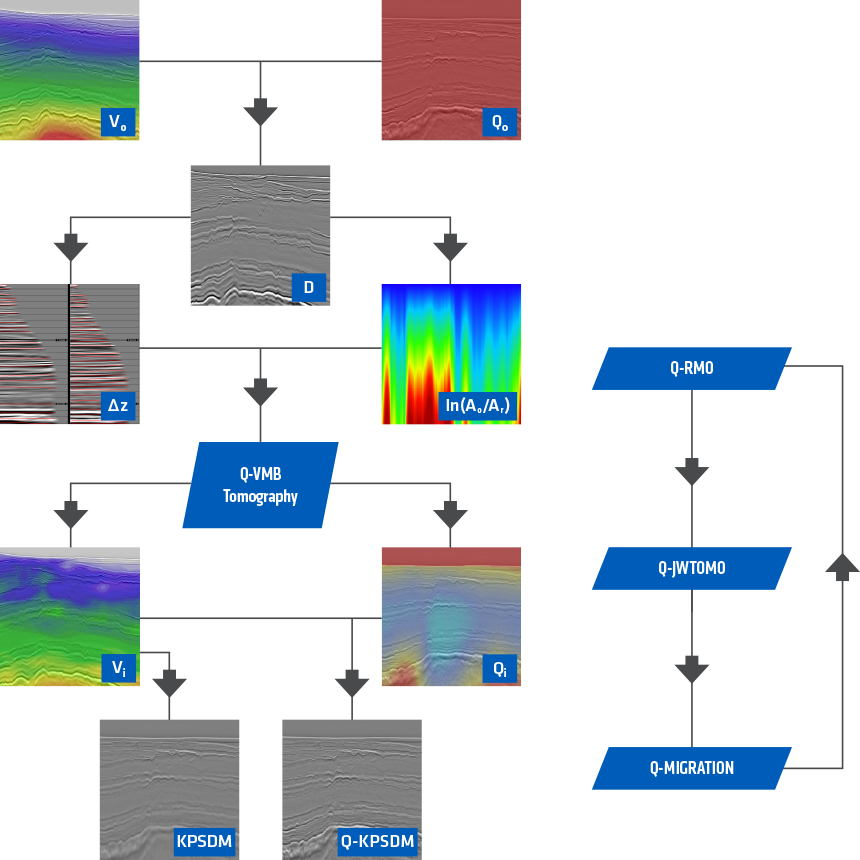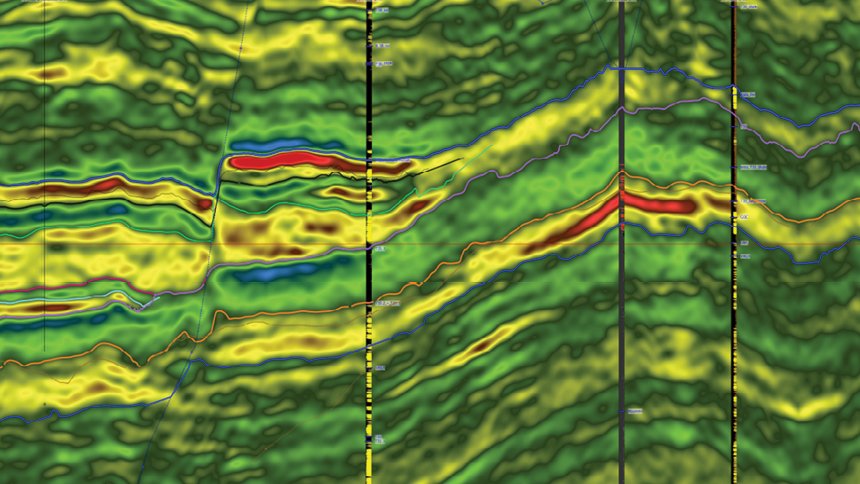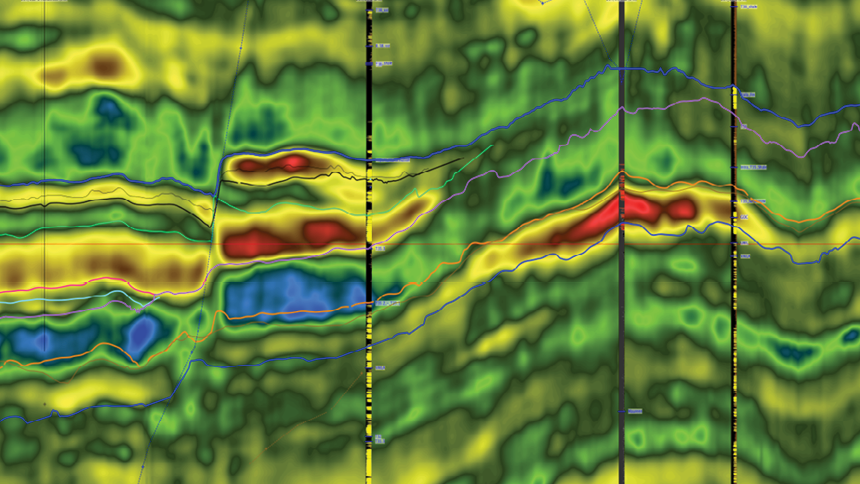- Compensates for attenuation affects upon both amplitude and phase in pre-stack data
- Simultaneous updates of Q and V using consistent kinematics through tomography
- Robust Q model updates even when velocity is imperfect
- Fast and fully integrated with all PGS imaging algorithms
To create the most accurate images of complex geological structures, PGS employs a Q-velocity model building (Q-VMB) workflow to simultaneously build high-resolution anisotropic velocity and Q models.
The Q-VMB workflow consists of three steps
- Q-residual moveout analysis (Q-RMO) to determine the inversion constraints
- Q-joint tomography (Q-JWTOMO) to perform the inversion using the constraints to get high-resolution anisotropic velocity and Q models
- Q-migration: Beam, Kirchhoff, wave equation migration (WEM), reverse time migration (RTM)
Workflow Details
The illustration below shows the QVMB workflow in detail. Initial seismic images are generated through Q-migration using velocity model V0 and background Q model Q0. After this Q-RMO is applied to common image gathers (CIGs) to measure traveltime residuals for velocity updates and spectral decay for Q updates. Both residuals are back-projected by a joint tomography engine to derive updated models Vi and Qi, which may be used as input to Q-migration on subsequent iterations of Q-VMB.

Contact a PGS expert
If you have a question related to our Imaging & Characterization services or would like to request a quotation, please get in touch.

